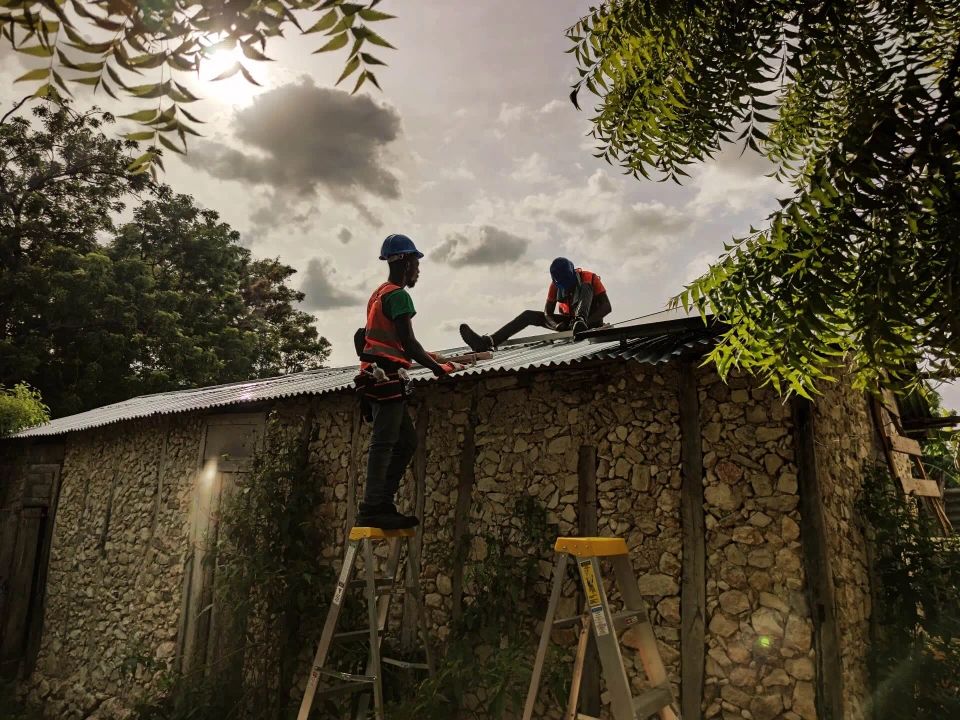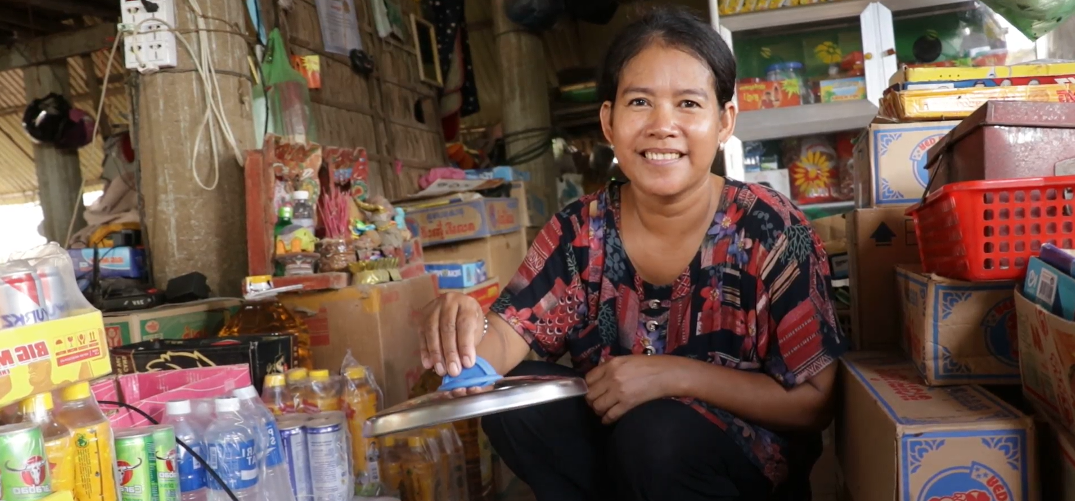Harnessing innovative solar technology to provide opportunity in remote areas
Okra provides utility project developers with IoT hardware & software to energize remote communities around the world with renewable energy. Okra’s Mesh Grid design allows for off-the-shelf solar panels and batteries to be distributed throughout a community and then interconnected into flexible clusters which can grow infinitely as demand increases. This makes it cheaper and faster to deploy last-mile energy access, which enables utility companies to operate and scale-up sustainably.
What were your reasons for engaging in inclusive business coaching/advisory services in Cambodia?
I can speak from my experience with Okra, which is an Australian start-up. A few years ago we were just a bunch of young people coming from the US, Canada, Australia – mainly western countries. We have a median team age of 29 now, but the reality back then was that we were all fresh engineering graduates trying to develop a product for people in rural last mile areas – places where we didn’t grow up. Whilst we’re good at building technology, there was a gap in understanding cultural norms – and that’s why we sought advice from BOPINC. They helped us to develop a framework to effectively engage with people from vastly different cultures.
Distributed power generation is increasingly providing access to electricity to people at the base of the economic pyramid (BoP). What has been a major development this year and what are the major trends for 2022?
We are seeing now that the distributed approach to providing electricity in remote areas is being recognized by industry thought leaders, like the World Bank and UNDP, as a viable and legitimate way to scale energy access. This may not have been the case even two years ago, when centralized approaches were by far the most dominant. At Okra, we have been pioneering decentralized Mesh Grid technology, and we are now seeing project tenders being released based on the specifications of our grid architecture. The major off-grid electrification trends are undergoing a paradigm shift and I think we can expect 2022 to be the year of distributed and decentralized approaches.

Which major technology changes do you see coming which will further expand energy provision to the poor?
Over the past decade, advancements in raw material and manufacturing processes for solar panels and batteries have probably had the biggest impact. The cost of these goods have fallen so rapidly as a result that energizing rural communities with renewable energy technologies is not just a green humanitarian choice, it’s now the most affordable choice compared to fossil fuels.
Other technologies that will accelerate energy access in the future are internet access and access to digital education, because these technologies provide a bottom-up feedback loop – you give energy access to people and they utilize it to learn and grow and develop as a society and community, and this drives more demand for energy access. There are a lot of innovations that are facilitating this right now.
What was key to maximizing your impact on the base of the pyramid? Which impacts have you measured since you launched your business?
There are a few key performance indicators we measure. At the surface level, it’s the number of people and households that we’ve energized with 24/7 electricity. We also measure our environmental impact in terms of CO2 offset, or the equivalent number of trees planted. Other metrics we have been trying to measure rigorously are end-user income growth as well as the revenues of our customers: the local energy companies who deploy our technology. We also try to monitor the quality of life of our end beneficiaries. We can see clear improvements manifested through the use of certain appliances like refrigerators, which keep food fresh longer and abolish the need for women to collect firewood and cook every single day.
There are a lot of moving parts that need to work in sync in order to create significant social impact. But core to all of this is the team at OKRA; having really dedicated, passionate people who want to solve hard problems. I strongly believe that the workforce behind off-grid energy access is filled with hardworking and driven stakeholders who are tirelessly moving the needle forwards towards 100% global electrification.
You are engaged in a highly regulated industry. Do you experience more willingness of regulators to be more accommodating to innovative energy providers and what is your message to them?
There is a big top-down push to mobilize capital and make progress towards SDG 7 – energy access for everyone. Implicit in that is that regulators need to look at what’s on the menu and choose the most efficient and cost-effective solutions. So yes - we are seeing more willingness to accommodate innovation. But it is a gradual process because it means going from older, centralized technologies to paradigm-shifting technologies which don’t have the same history behind them.
Climate change is driving renewable energy, often the basis for distributed energy. How much of a driver is COP26 and the urgency for change fueling your business?
Climate change is a fundamental pillar upon which we stand. When we think about climate change, we need to consider the main contributors and how they became that way; obviously, developed countries are the biggest consumers (and the loudest speakers at events like COP26). Meanwhile there are almost a billion people without reliable electricity whose environmental footprint is negligible in comparison, but they are still using rusty diesel generators for lighting whilst tech giants are creating a metaverse. That disparity is on the cusp of growing exponentially, and will have its own damaging effects if left unaddressed. To grow as a society would usually involve huge amounts of waste and pollution, so by energizing last-mile communities with renewable energy, I believe we are largely decoupling this environmental impact from the socio-economic development of almost a billion people.

You are expanding into Sub-Saharan Africa: what are the lessons learned in Southeast Asia that you are taking into these new geographies and what challenges do you expect?
A huge lesson from Southeast Asia was that at the end of the day, we’re in the business of energizing people who have their own cultural norms and ways of life. They do business and use energy in their own way. Even from operating in Cambodia and then going to the Philippines, there were differences that we could never have anticipated. And it’s not just the end-consumers with unique characteristics, it’s the entire local business ecosystem. So instead of entering a new market and trying to prescribe how things should be done, we learned to simply say: “These are all of the tools that are on offer. Here’s how our technology works. We can show you how to leverage it effectively, but we recognize that we’re not the local experts – so let’s work together in a way that is conducive to moving as fast as possible.”
Is there anything else you would like to add?
These are exciting times, and we don’t fully understand the gravity or impact of having so many more people connected to electricity. The driver behind what we do is to enable opportunity, and electricity is the lifeblood of that opportunity. With access to reliable electricity, and therefore the internet, education and markets, who knows where we’ll end up. Just imagine what an additional 800 million hardworking, creative people from areas of the world that are unheard of, will contribute to our digitally connected economy...
